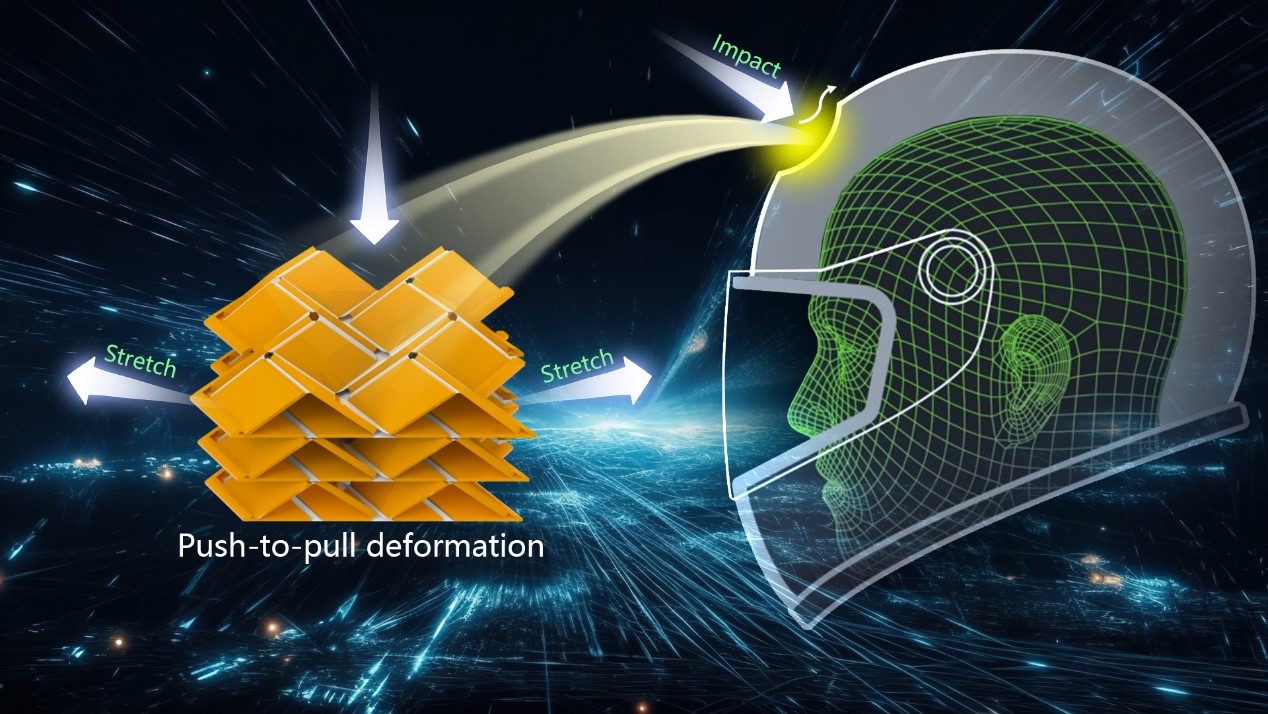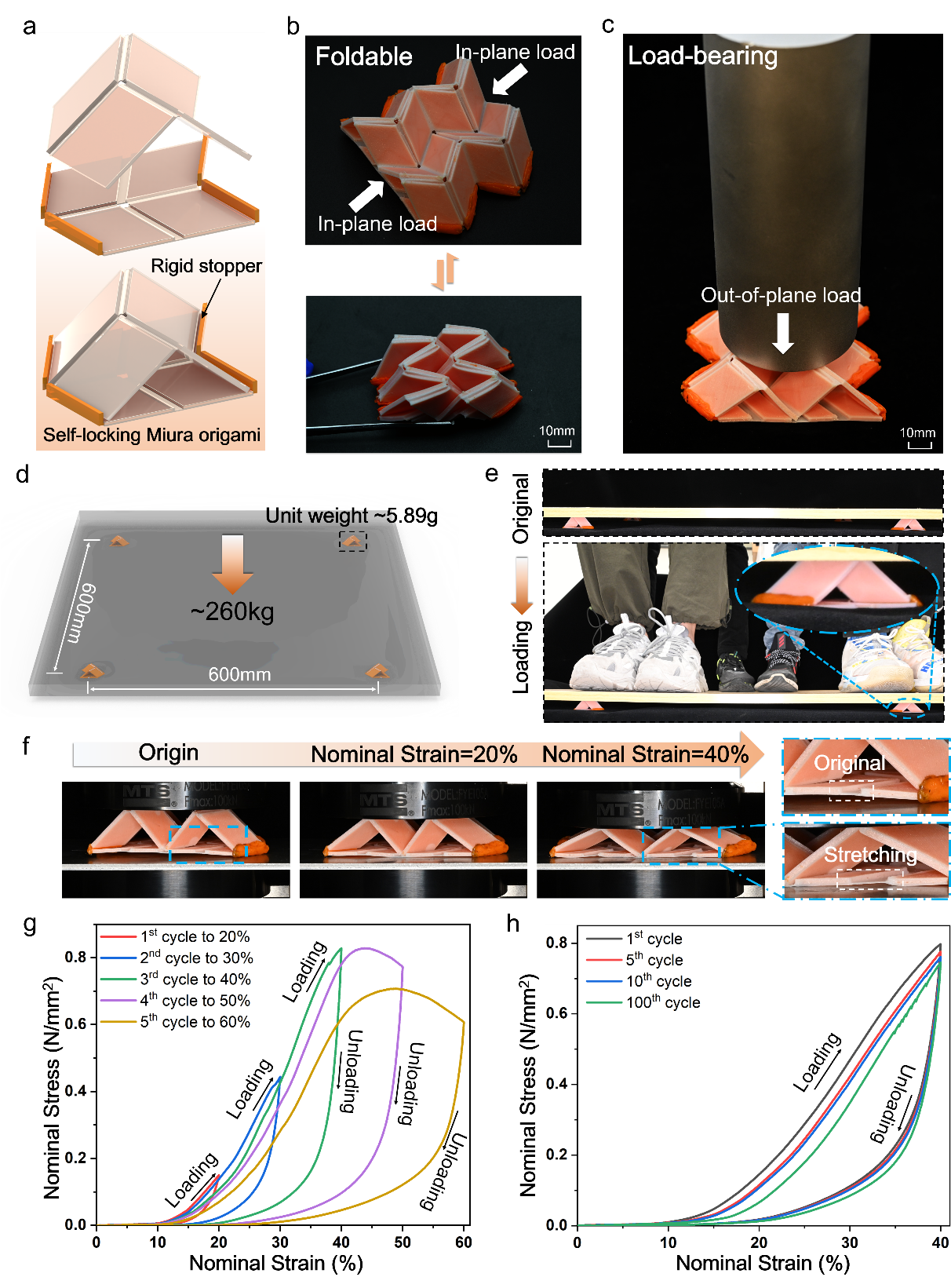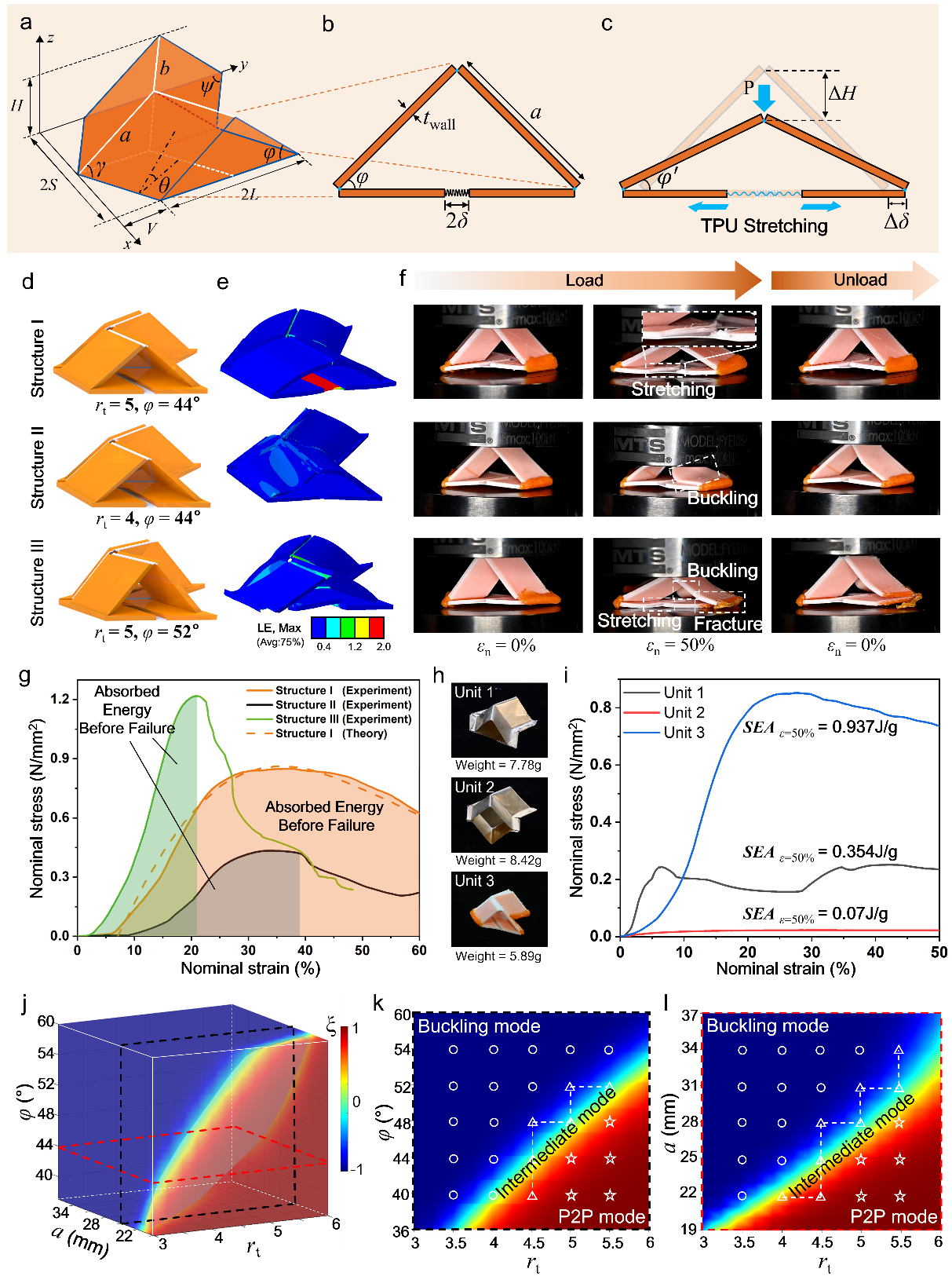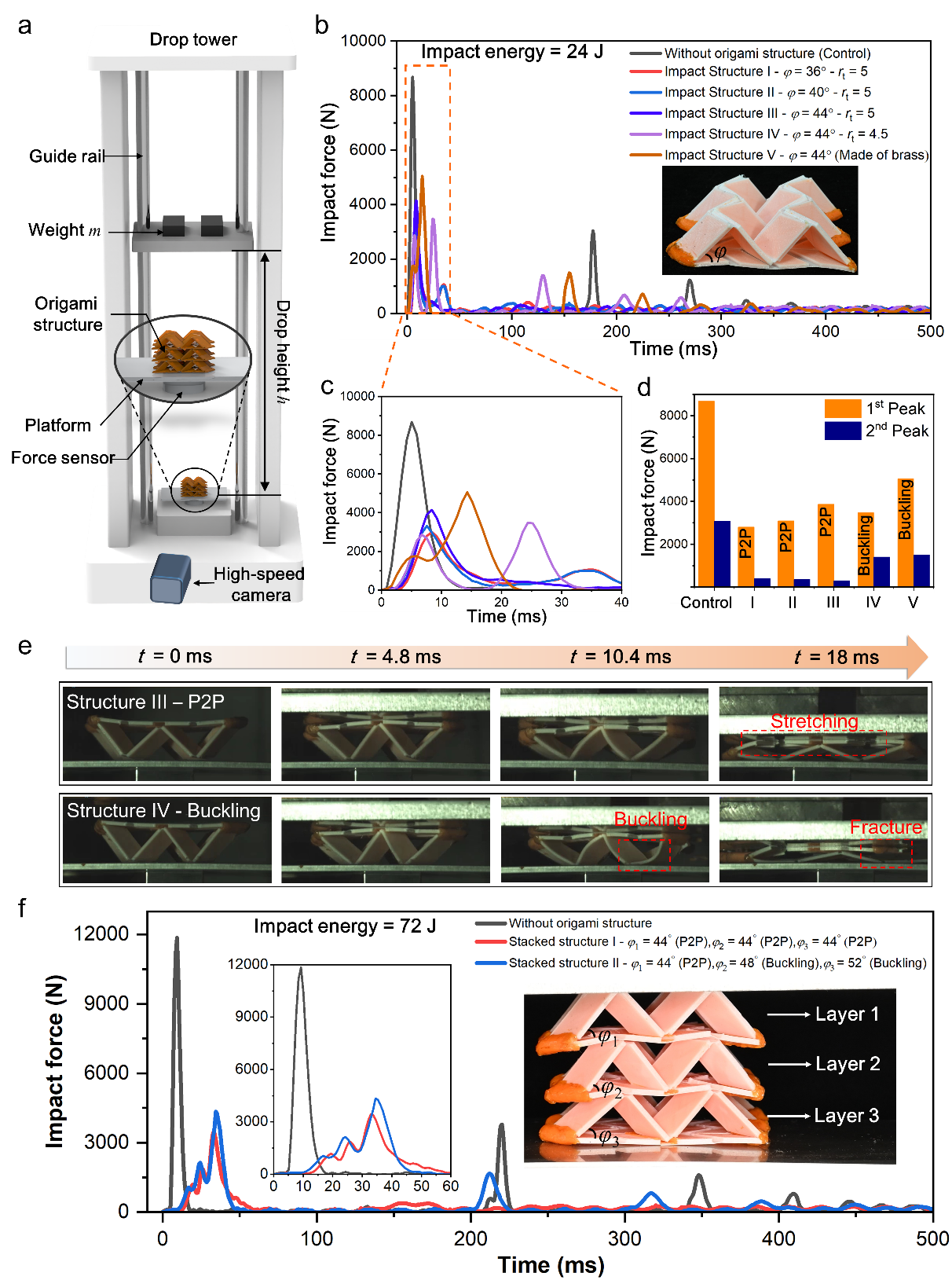
To address this problem, the joint research team of Associate Professor Qi Ge from the Southern University of Science and Technology (SUSTech) and Professor Yang Lu from the University of Hong Kong (HKU) has proposed a design and fabrication strategy that can make origami structures with both foldability and large load capacity. Through the ingenious design of the rigid-flexible Miura thick-panel origami structure, a special deformation mode of “push-to-pull” is realized, enabling the origami structure to withstand static loads of more than 11,000 times its own weight and to effectively absorb the impact energy generated by dynamic loads.
This research work, entitled “Multimaterial 3D Printed Self-locking Thick-panel Origami Metamaterials,” has been published in Nature Communications.
As shown in Figure 1, based on the existing FDM multimaterial 3D printing technology, the team proposed a “wrapping-based” multi-material 3D printing method that is not limited by material properties and geometric patterns. This overcomes the weak mechanical properties of the existing FDM multi-material 3D printing soft and hard material interfaces, achieving the integration of rigid panels and flexible hinges of origami structures and strong mechanical interfaces. In doing so, it uses the large deformation capacity of TPU flexible hinges to make the thick panel origami structures fully foldable.

Figure 1. Wrapping-based multimaterial 3D printing method enables the integrated fusion and strong mechanical interface of rigid panels and flexible hinges of thick-panel origami structures
Based on the proposed method of manufacturing thick-panel origami structures, the team proposed a self-locking thick-panel origami structure based on the Miura origami pattern (Figure 2). The origami structure can be folded when subjected to in-plane loading, and it exhibits excellent load-bearing capacity in the out-of-plane direction (more than 11,000 times its self-weight). In addition, the self-locking origami structure exhibits a unique “push-to-pull” deformation behavior, converting vertical pressure into tension on the flexible TPU hinges, allowing the structure to withstand over 60% compressive strain and over 100 cycles of compression at 40% strain.

Figure 2. The self-locking origami structure exhibits excellent foldability and load-bearing capacity
To ensure that the designed compressed self-locking thick-panel origami structure exhibits “push-to-pull” deformation instead of “buckling” deformation mode, the researchers established a theoretical model to describe the compressive deformation of self-locking thick-panel origami structure by integrating structural mechanics, hyperelasticity mechanics, plate and shell theory, and conducted parametric research. As shown in Figure 3, the design parameter domain of the “push-to-pull” deformation mode is clearly defined by the constructed 3D design space diagram.

Figure 3. Constitutive model of self-locking thick-panel origami structure with 3D design parameter space
In addition, as shown in Figure 4, the self-locking thick-panel origami structure effectively transforms the vertical impact load into the horizontal stretching of the TPU flexible hinge through the “push-to-pull” deformation mode. It extends the impact contact time, dissipating a large amount of impact energy in the stretching process of flexible hinges, greatly reducing the initial peak impact force and effectively absorbing the impact energy.
This work takes the frontier research field of origami structure and technology as the research vehicle, and integrates the knowledge of mechanism kinematics, structural mechanics, hyperelasticity mechanics, and plate and shells theory to validate the design of “push-to-pull” origami structure by combining the designed origami structure with the advanced manufacturing technology of multimaterial 3D printing.

Figure 4. Self-locking thick-panel origami metamaterials exhibit excellent impact resistance
Haitao Ye, a joint Ph.D. candidate of SUSTech and City University of Hong Kong (CityU), is the first author of this paper. Prof. Qi Ge of SUSTech and Prof. Yang Lu of HKU are the co-corresponding authors, and SUSTech is the first affiliation.
This study was supported by the National Key Research and Development Program of China, National Natural Science Foundation of China (NSFC), Shenzhen Science and Technology Innovation Commission, and the CityU Foundation.
Paper link: